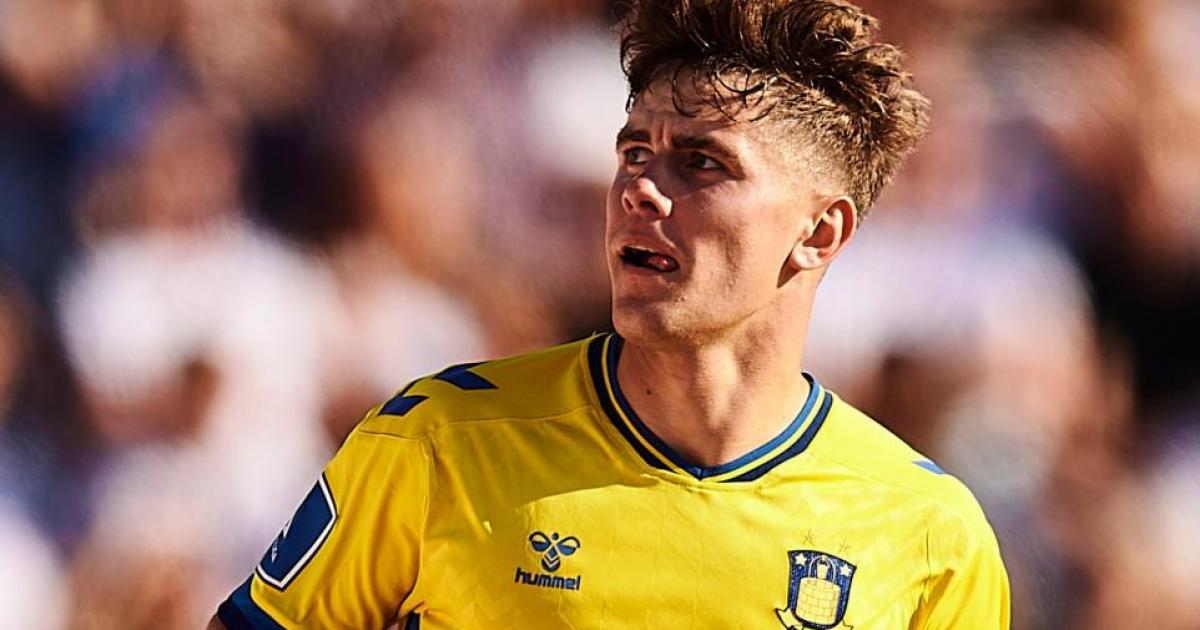Various options are orbiting around a loosely fixed front three for the Canaries, with more potentially on the move and few attached firmly to a single position.
Perhaps it’s the obsession with versatility in signings that makes it feel that way. Almost every announcement, analysis of or opinion on a transfer includes the proclamation that players can adopt various roles in their new colours, none more so than the yellow and green so regularly donned by new arrivals this summer.
In the case of Mathias Kvistgaarden – the £6.9million arrival that’s caused delight both behind the scenes at Colney and among the club’s fan base – that description appears at least a fairly accurate one. Although he’s operated for the large majority of his career as a central striker, a good chunk of the Dane’s football has come as a left winger.
It’s hoped that at Carrow Road he’ll prove an option in both positions, adding strength in depth to two areas that undoubtedly need more of it this summer. Top scorer Borja Sainz is on the verge of a move to Portuguese giants Porto and talismanic striker Josh Sargent could well be on his way out too.
Josh Sargent’s future hangs in the balance (Image: Paul Chesterton/Focus Images Ltd)
But relying on Kvistgaarden to play solely as a first-choice left winger would be foolish, especially in the case of Sargent’s departure, and that’s why sporting director Ben Knapper has turned to the area as a transfer priority. At least one career left-sided attacker will be brought in before the window shuts in September, and a glance at the threadbare list of options explains why.
Sainz will leave behind only one true left winger after completing a £14.25million exit, and even then it’s someone who’s yet to start a Championship game.
Elliot Myles will be given a chance during pre-season, however. The 18-year-old has made enough of an impression for Wales boss Craig Bellamy to call him up to their senior squad, and will be hoping to do something similar for new chief Liam Manning at club level. For now, though, it’s obvious that some work needs doing on the left side.
On the right the future is less clear, as supporters and staff alike wait with baited breath to see if Matej Jurasek can live up to lofty expectations and stay fit for the majority of the campaign. If he does then he’s a ready-made first-choice, having been eulogized at length in the corridors of Norwich City power.
But fail to do so and the responsibility falls to Ante Crnac, someone seen by Knapper as a striker by trade. Cover from Kvistgaarden and (potentially) Sargent means that’s less of a problem from a squad building perspective, but the breakout year many are expecting seems less likely from a secondary position.
Ante Crnac has played in various positions for the Canaries (Image: Jeremy Landey/Focus Images Ltd)
Up front the above evidence suggests a good amount of competition, but City’s pursuance of versatile players benefits them in this sense. Where prior regimes have left out-of-favour strikers frustrated and hopeless – Adam Idah and his wantaway period an exemplar – Knapper has strived to create a department boasting both competition and contentment.
Where an inflexibility of his charges would have meant consigning two of a group containing a £6.9million signing, an £8million signing and an £8.5million signing to the bench, that now need not be the case.
In truth, Manning will likely have to complete the same audit with his strikers that he will his defenders, midfield and squad at large. In such a complicated department with such a legion of options to choose from, it would be unwise to forecast exactly what his front three consists on August 9 or beyond.
What will please City’s chief pragmatist is the number of choices he has to make, as he sets about a season focused on the game-to-game. With plenty there and more to come, the plasticity of his forwards can hardly be questioned.
In most cases that quality is overhyped, but it might just be the defining feature of a modern-day Norwich striker.
